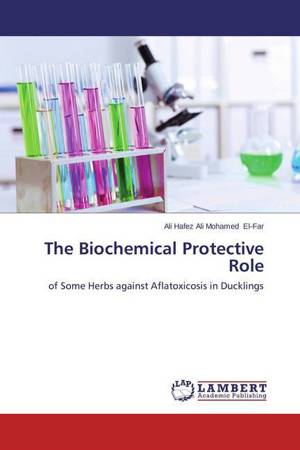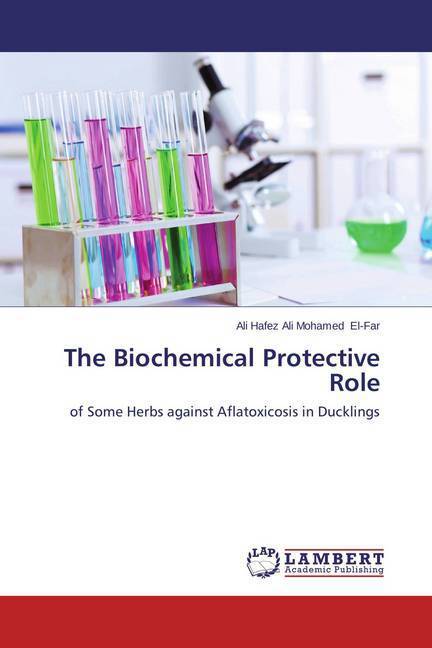
- Afhalen na 1 uur in een winkel met voorraad
- Gratis thuislevering in België vanaf € 30
- Ruim aanbod met 7 miljoen producten
- Afhalen na 1 uur in een winkel met voorraad
- Gratis thuislevering in België vanaf € 30
- Ruim aanbod met 7 miljoen producten
Zoeken
The Biochemical Protective Role
of Some Herbs against Aflatoxicosis in Ducklings
El-Far Ali Hafez Ali Mohamed
Paperback | Engels
€ 70,95
+ 141 punten
Omschrijving
Abu Hurayrah narrated that the Prophet Mohamed peace be upon him said: "Use this Black Seed regularly, because it is a cure for every disease, except death." [Al-Bukhaari and Muslim]. Turmeric is a yellow colored spice derived from the rhizome of the plant Curcuma longa and has been used as traditional medicine from ancient times in China and India. It is also known as kunyit (Indonesian and Malay), besar (Nepali) and haldi or pasupu in some Asian countries. In Assamese it is called halodhi. Mycotoxins are produced mainly by the mycelial structure of filamentous fungi, or more specifically the molds. Mycotoxins are secondary metabolites that have no biochemical role in fungal growth and development. Toxigenic molds are known to produce one or more of these toxic secondary metabolites. It is well established that not all molds are toxigenic and not all secondary metabolites from molds are toxic.
Specificaties
Betrokkenen
- Auteur(s):
- Uitgeverij:
Inhoud
- Aantal bladzijden:
- 168
- Taal:
- Engels
Eigenschappen
- Productcode (EAN):
- 9783659512261
- Verschijningsdatum:
- 11/01/2014
- Uitvoering:
- Paperback
- Formaat:
- Trade paperback (VS)
- Afmetingen:
- 152 mm x 229 mm
- Gewicht:
- 254 g

Alleen bij Standaard Boekhandel
+ 141 punten op je klantenkaart van Standaard Boekhandel
Beoordelingen
We publiceren alleen reviews die voldoen aan de voorwaarden voor reviews. Bekijk onze voorwaarden voor reviews.











